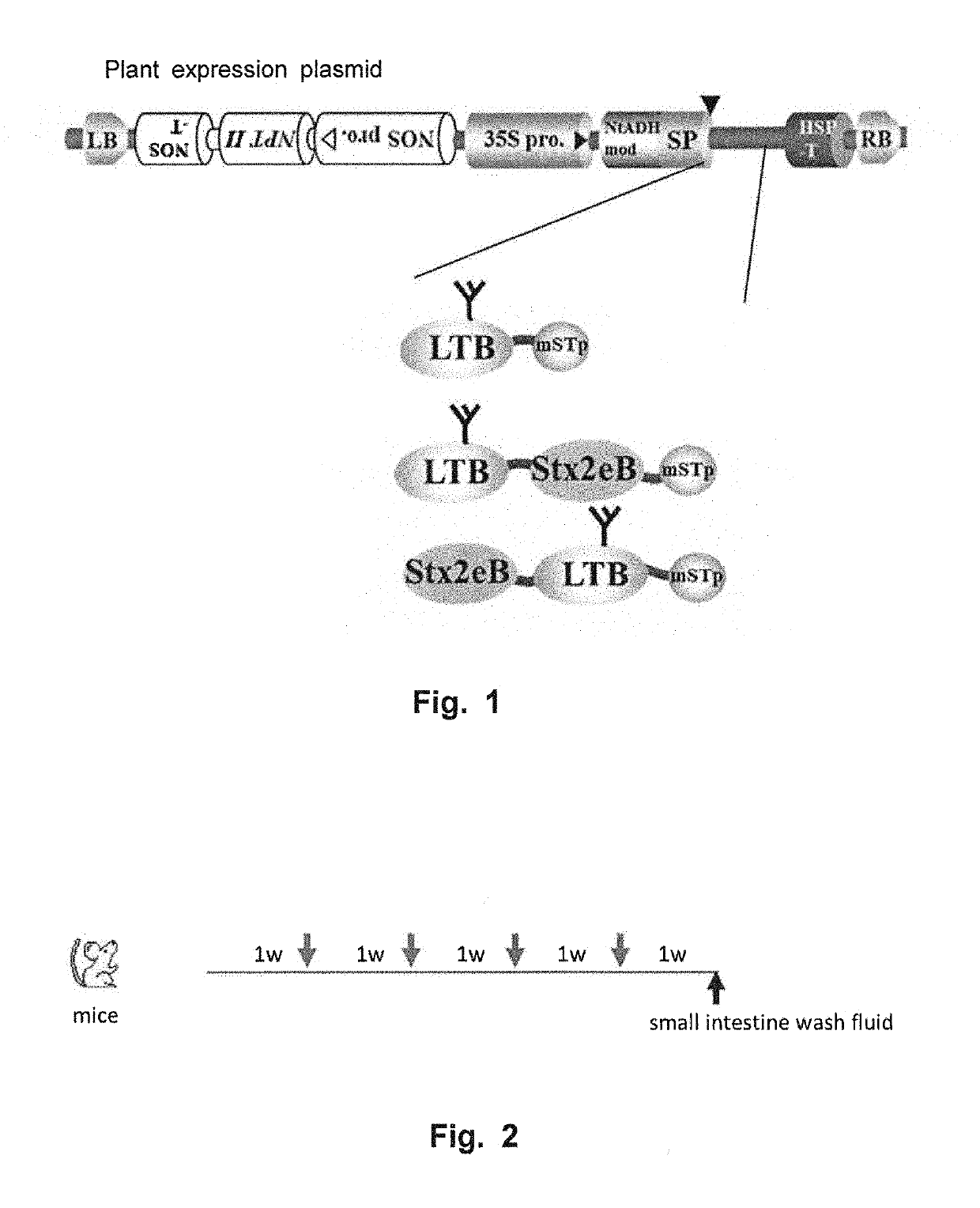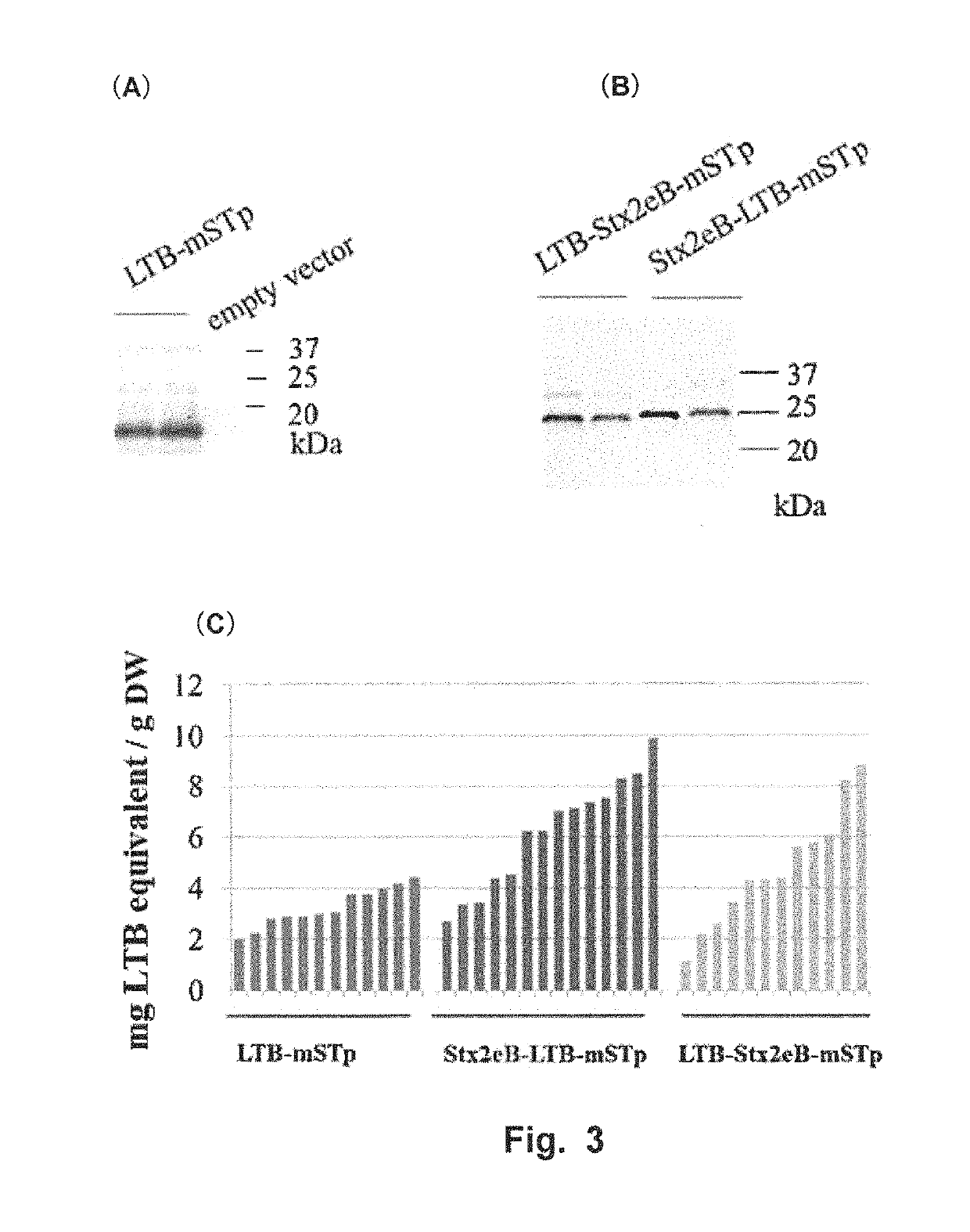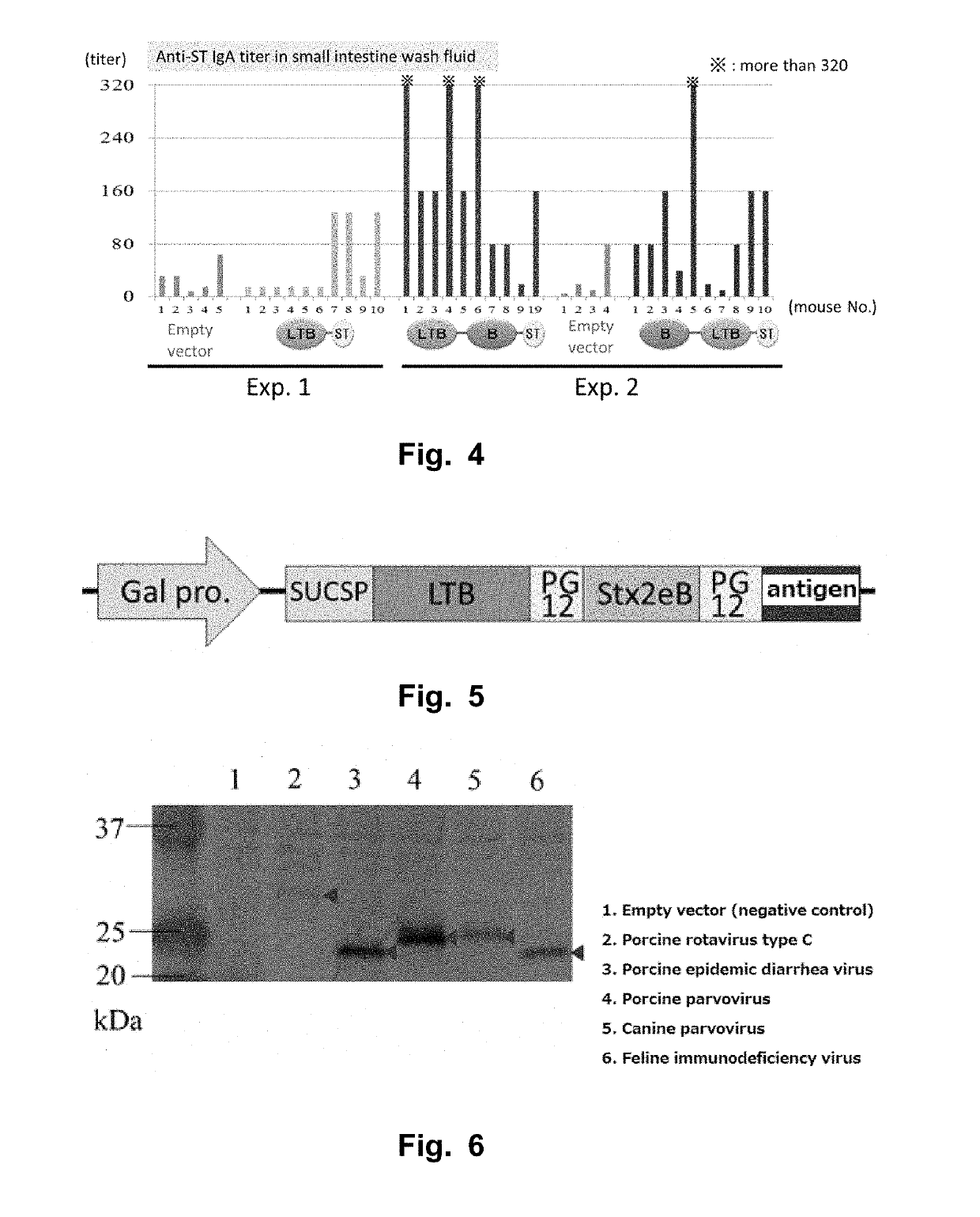Vaccine antigen with increased immunogenicity
a vaccine and immunogenicity technology, applied in the field of fusion proteins, can solve the problems of insufficient preventive effect obtained by such methods, unclear ability of the fusion protein serving as a vaccine or the ability of the antigen in a state of being fused with a third antigen, etc., to achieve low immunogenicity, increase productivity, and improve immune induction efficiency
- Summary
- Abstract
- Description
- Claims
- Application Information
AI Technical Summary
Benefits of technology
Problems solved by technology
Method used
Image
Examples
example 1
Escherichia coli Expression>
[0099]The followings were used as candidate vaccine antigens: 1) a nontoxic B subunit of a heat-labile toxin produced by enterotoxigenic Escherichia coli (LTB:SEQ ID NO: 12); 2) a detoxified mutant of an STp toxin produced by enterotoxigenic Escherichia coli (NTFYCCELCCNPLCAGCY (SEQ ID NO: 16), hereinafter referred to as “mSTp”) (Sato et al., 1994); and 3) a nontoxic B subunit of Shiga toxin 2e produced by enterohemorrhagic Escherichia coli (Stx2eB). Sugar-chain-free Stx2eB (with a substitution of asparagine at position 73 from the N-terminus by serine) (SEQ ID NO: 10) was used herein as Stx2eB. DNA coding for mSTp was amplified using STpA13L-F (5′-gatcc aac acc ttc tac tgc gag ttg tgc tgc-3′: SEQ ID NO: 23) and STpA13L-R (5′-gatct gta gca gcc ggc gca caa ggg gtt gca caa ctc: SEQ ID NO: 24).
[0100]LTB-mSTp (SEQ ID NO: 18) was constructed by fusing LTB and mSTp via a PG12 linker (Matsui et al, Transgenic Res, 2011, 20:735-48:SEQ ID NO: 2), and LTB-Stx2eB-mS...
example 2
[0112]Vaccine antigens for the following diseases were each fused with LTB-Stx2eB. First, the LTB-Stx2eB fusion gene was introduced into pYES2 (Invitrogen).
[0113]As a canine parvovirus neutralization epitope, a sequence (SDGAVQPDGGQPAVRNE: SEQ ID NO: 33) derived from a capsid protein VP2 neutralization epitope was used (Casal et al., Journal of Virology, 1995 69, 7274-7277). This epitope has a sequence that is highly maintained among cell lines. For example, the DNA sequence thereof is represented by 5′-tcggacggcgcggtgcagccggacggcggccagccggcggtgcggaacgag-3′ (SEQ ID NO: 34).
[0114]DNA of the neutralization epitope region was prepared by conducting annealing of a CP-F primer (5′-TGGTTCTCCTAGATCC TCG GAC GGC GCG GTG CAG CCG GAC GGC GGC CAG CCG GCG GTG-3′: SEQ ID NO: 35) and a CP-R primer (5′-CCTTAGAGCTCCCGGGTACTATCAGTCCTT CTC GTT CCG CAC CGC CGG CTG GCC GCC-3′: SEQ ID NO: 36) and conducting an elongation reaction by DNA polymerase. In addition, a fragment corresponding to the downstream...
example 3
[0132]A sequence (SDGAVQPDGGQPAVRNE: SEQ ID NO: 33) (hereinafter expressed as “VP2”) derived from a capsid protein VP2 neutralization epitope serving as a canine parvovirus neutralization epitope was linked to the C-terminus of LTB-Stx2eB in the same manner as in Example 2. Further, 6×His to be used as a purification tag was fused therewith, thereby preparing a gene construct for causing the expression of the fusion protein added with the secretory signal peptide (LBVP2). The thus obtained gene construct was inserted into an Escherichia coli expression vector pET15b. The Escherichia coli BL21 pLys cell line was transformed with the resulting expression vector.
Escherichia coli>
[0133]Colonies of Escherichia coli having a recombinant plasmid were inoculated in four test tubes containing 5 mL of 2×YT medium containing 100 mg / L ampicillin and cultured overnight at 180 rpm and 37° C. This preculture solution in an amount of 20 ml was inoculated on 1 L of 2×YT medium containing 100 mg / L...
PUM
 Login to View More
Login to View More Abstract
Description
Claims
Application Information
 Login to View More
Login to View More - R&D
- Intellectual Property
- Life Sciences
- Materials
- Tech Scout
- Unparalleled Data Quality
- Higher Quality Content
- 60% Fewer Hallucinations
Browse by: Latest US Patents, China's latest patents, Technical Efficacy Thesaurus, Application Domain, Technology Topic, Popular Technical Reports.
© 2025 PatSnap. All rights reserved.Legal|Privacy policy|Modern Slavery Act Transparency Statement|Sitemap|About US| Contact US: help@patsnap.com



